Same beliefs, different approaches.
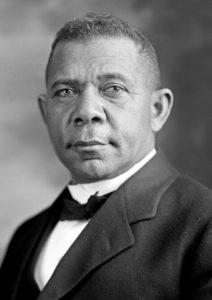
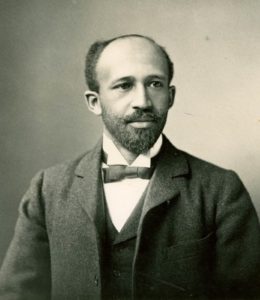 In the spring of 2016 I took a class on literary theory from a brilliant IUPUI professor, Tom Marvin. The class was structured around student discovery and presentation. One of my class projects was to explain the African-American approach to literature.
In the spring of 2016 I took a class on literary theory from a brilliant IUPUI professor, Tom Marvin. The class was structured around student discovery and presentation. One of my class projects was to explain the African-American approach to literature.
 Our text referenced both W.E.B. Du Bois and Booker T. Washington. Both black
Our text referenced both W.E.B. Du Bois and Booker T. Washington. Both black men lived during the turn of the twentieth century, knew each other, and interacted with the others’ point of view. The textbook clearly appreciated Du Bois, considered a more politically “liberal” voice, over that of Mr. Washington, revered by many “conservatives.”
men lived during the turn of the twentieth century, knew each other, and interacted with the others’ point of view. The textbook clearly appreciated Du Bois, considered a more politically “liberal” voice, over that of Mr. Washington, revered by many “conservatives.”
I was not interested in labels. Instead, I chose to show how each man’s ideological lineage could be traced through the last 100 plus years. I decided to put together power point slides to compare-and-contrast each perspective.
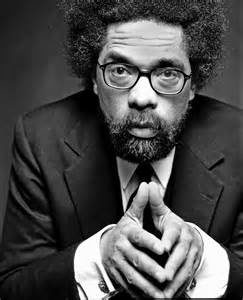 From Mr. Du Bois’ philosophical heritage I drew connections to Malcolm X and
From Mr. Du Bois’ philosophical heritage I drew connections to Malcolm X and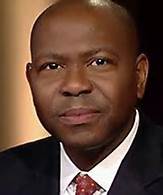 Cornel West. Mr. Washington’s mindset was considered through the lives of Martin Luther King Jr. and Jason Riley. All the individuals mentioned are black men. The men all shared the same beliefs about racial equality but had markedly different approaches.
Cornel West. Mr. Washington’s mindset was considered through the lives of Martin Luther King Jr. and Jason Riley. All the individuals mentioned are black men. The men all shared the same beliefs about racial equality but had markedly different approaches.
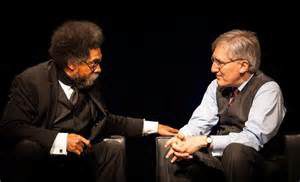 I then veered back to a cultural-political divisions between “liberals” and “conservatives.” To do so, I referenced the friendship between Cornel West, a black “liberal” and Robert P. George, a white “conservative.” Both men taught together at Princeton. Both men dialogue well with each other about their differences.
I then veered back to a cultural-political divisions between “liberals” and “conservatives.” To do so, I referenced the friendship between Cornel West, a black “liberal” and Robert P. George, a white “conservative.” Both men taught together at Princeton. Both men dialogue well with each other about their differences.
And both men are Christians.
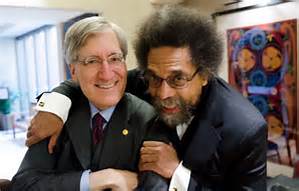 I showed a picture of both in jocular embrace. I showed a picture of West holding Harriet Tubman’s Bible as George is sworn into a Civil Rights Commission. I showed a picture of the two men discussing issues about which they disagree in front of a student assembly.
I showed a picture of both in jocular embrace. I showed a picture of West holding Harriet Tubman’s Bible as George is sworn into a Civil Rights Commission. I showed a picture of the two men discussing issues about which they disagree in front of a student assembly.
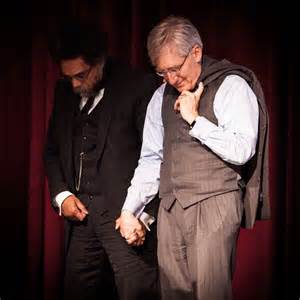 But the picture I saved for last was the picture of Mr.’s West and George, holding hands, heads bowed, praying together.
But the picture I saved for last was the picture of Mr.’s West and George, holding hands, heads bowed, praying together.
You could have heard a pin drop on the carpeted classroom floor.
I asked if there were any questions. I received stunned silence.
Students were visibly arrested by such a visual display of Christian care between two brothers – one black, one white, one liberal, one conservative. Since the discussion at Biola University (see the 1.5 hour YouTube video here), West and George have visited other university settings to convey the same message: disagreement and dialogue should be protected on college campuses.
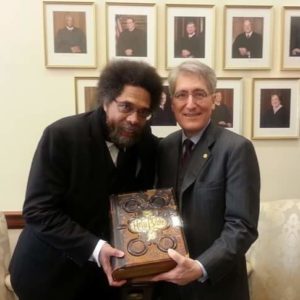 All of us could take a cue from Professors West and George. The last few weeks are full of talk about NFL boycotts and statue removal. Since then, I have been asking myself questions I wonder if West and George would ask.
All of us could take a cue from Professors West and George. The last few weeks are full of talk about NFL boycotts and statue removal. Since then, I have been asking myself questions I wonder if West and George would ask.
-
What is the basis for our difference?
-
What is the source of any solution?
-
What should be the expected outcome?
-
Is there room for compromise, give-and-take, or alternative approaches?
-
By whose authority will we come to any conclusion?
 A course on literary theory allowed me to expand my horizons. No, I did not agree with everything I heard: it wouldn’t be education if that were true! But I was given an exceptional opportunity to study two different men with the same belief but different approaches to a solution. Perhaps the question all of us should answer is, “Can I listen long enough to understand another’s point of view?”
A course on literary theory allowed me to expand my horizons. No, I did not agree with everything I heard: it wouldn’t be education if that were true! But I was given an exceptional opportunity to study two different men with the same belief but different approaches to a solution. Perhaps the question all of us should answer is, “Can I listen long enough to understand another’s point of view?”
If we only listen to the VOICES of those in agreement with us we have heard nothing.
 For those wondering why Mark did not talk about ‘statues’ he hopes questions will move to discussions then proceed to actions. Mark is glad to listen to others, both students and faculty at IUPUI. You can find Mark around a student center lunch table each week dialoguing with others. Dr. Mark Eckel is the President of The Comenius Institute (site and 1 minute video).
For those wondering why Mark did not talk about ‘statues’ he hopes questions will move to discussions then proceed to actions. Mark is glad to listen to others, both students and faculty at IUPUI. You can find Mark around a student center lunch table each week dialoguing with others. Dr. Mark Eckel is the President of The Comenius Institute (site and 1 minute video).
AFTERWORD on ‘STATUE REMOVAL’: [hyperlinks embedded]
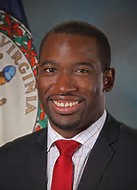 Richmond, Virginia’s African-American Mayor Levar Stoney has a unique approach to statues’: add signage to the monument “to set the record straight.” Author Dave Shiflett further suggests in his essay “Why Not Put Truth on a Pedestal?” more African-Americans should be remembered in monuments. A monument for Sojourner Truth in Richmond, Virginia is an exceptional proposal.
Richmond, Virginia’s African-American Mayor Levar Stoney has a unique approach to statues’: add signage to the monument “to set the record straight.” Author Dave Shiflett further suggests in his essay “Why Not Put Truth on a Pedestal?” more African-Americans should be remembered in monuments. A monument for Sojourner Truth in Richmond, Virginia is an exceptional proposal.
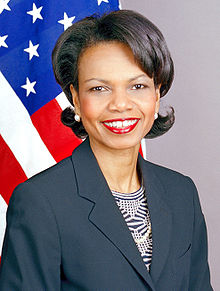 Consider other voices: Condoleezza Rice suggests that statue removal is a “sanitation of history” whereas historian John Fea says if you’re really concerned about statue removal, choose other alternatives.
Consider other voices: Condoleezza Rice suggests that statue removal is a “sanitation of history” whereas historian John Fea says if you’re really concerned about statue removal, choose other alternatives.

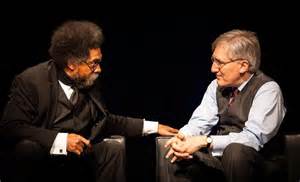
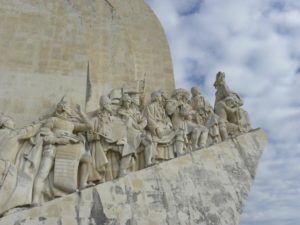
In a conversation with a friend over breakfast, the topic of Charlottesville came up. His wife, who was born in Latin America and is a well respected and revered professor, has been shaken over the racially charged events brought to the surface these past months. I listened, pondered, and responded with love and concern over my dear friend of many years and his wife.
Though we didn’t necessarily agree with each other on some facets, I couldn’t disagree with the perception and the pain. The problem, I suggested, was that there are too many voices talking over one another and not enough listening going on. What we need to do is find a way to listen, show concern, and love our neighbor. The statues are not the problem, the unwillingness to be good listeners is. As a result, we have a history of “fixing things” without seeing the whole picture, which creates more discord and future conflict. This is akin to a doctor writing a prescription without understanding the patient fully.
Great post, my friend!